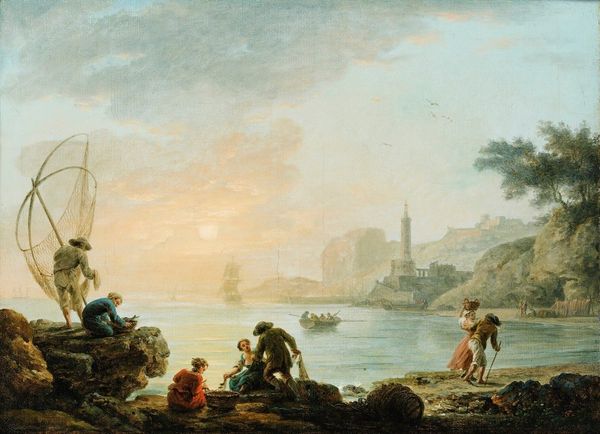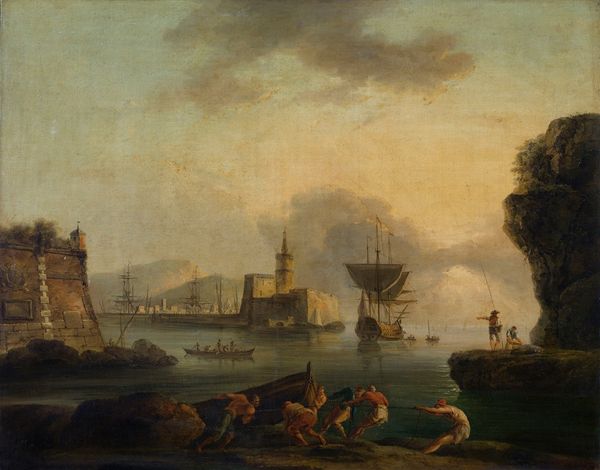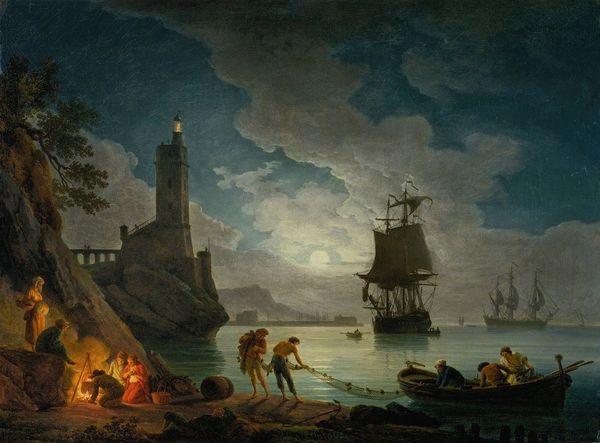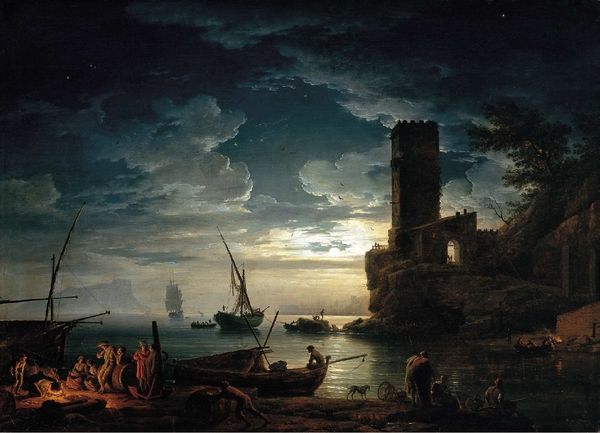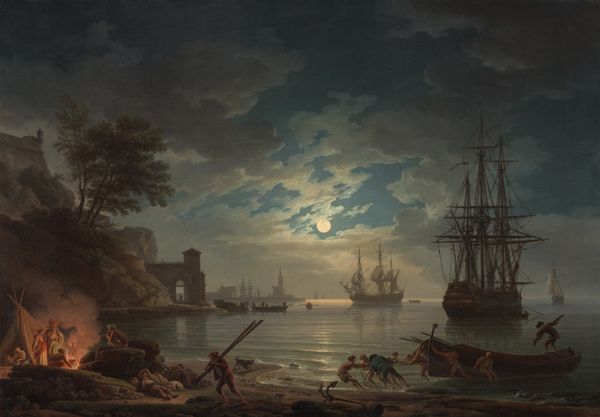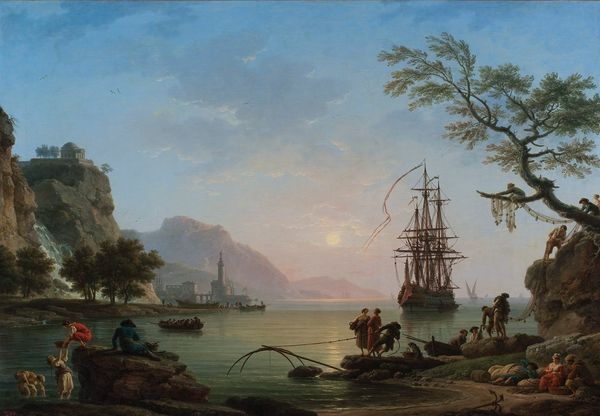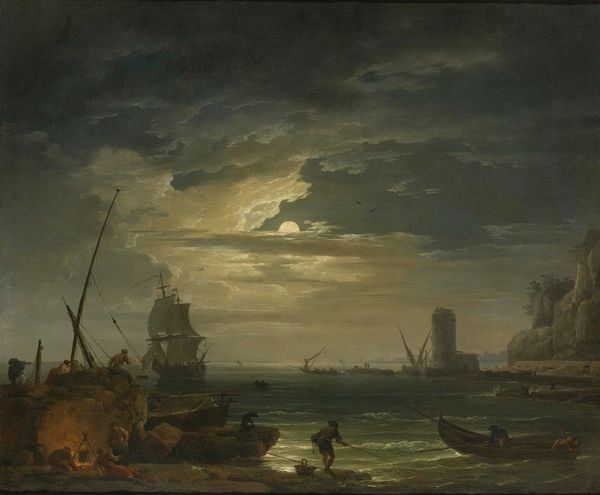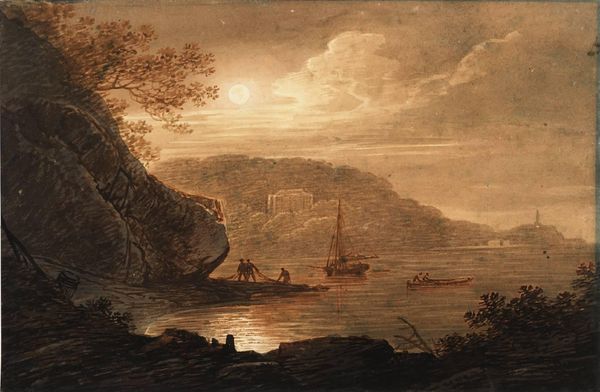
Copyright: Public domain
Editor: This is Claude-Joseph Vernet's "Night A Port in the Moonlight," created in 1748. I find the overall scene quite serene, despite the potential dangers of a nighttime port. What's your take? Curator: The moonlight itself carries considerable weight. Light, especially in pre-modern eras, represented knowledge, divine presence, and safety. The juxtaposition of the bright moon with the obscured details in the shadowy areas emphasizes the unknown, the potential lurking in darkness, both literal and symbolic. Vernet isn't just painting a pretty picture, he’s using a visual language to speak about the human condition. Editor: So, you see the symbolism of the moon as more than just setting a mood? Curator: Absolutely! Notice the positioning of the figures around the fire compared to the distant, looming ships. Fire represents civilization, community, the known. While the ships symbolize exploration, the wider world, perhaps ambition – things both promising and threatening. The artist uses potent cultural symbols to show a dialogue between the human desire for stability and the lure of the unknown. Editor: That’s fascinating, I hadn’t considered the fire in that context. Curator: Think also of the clothing – the figures’ garb isn’t purely functional. Its artistic rendering reinforces the narratives associated with maritime exploration. Consider the connotations tied to depictions of docks and seafaring in that historical period, too. How did commerce and national interests shape image production? Editor: This painting offers such a richer perspective now. Thank you. Curator: Indeed. It makes you appreciate how artists communicated more than just a scene; they distilled and communicated worldviews, sometimes even ideologies.
Comments
No comments
Be the first to comment and join the conversation on the ultimate creative platform.

